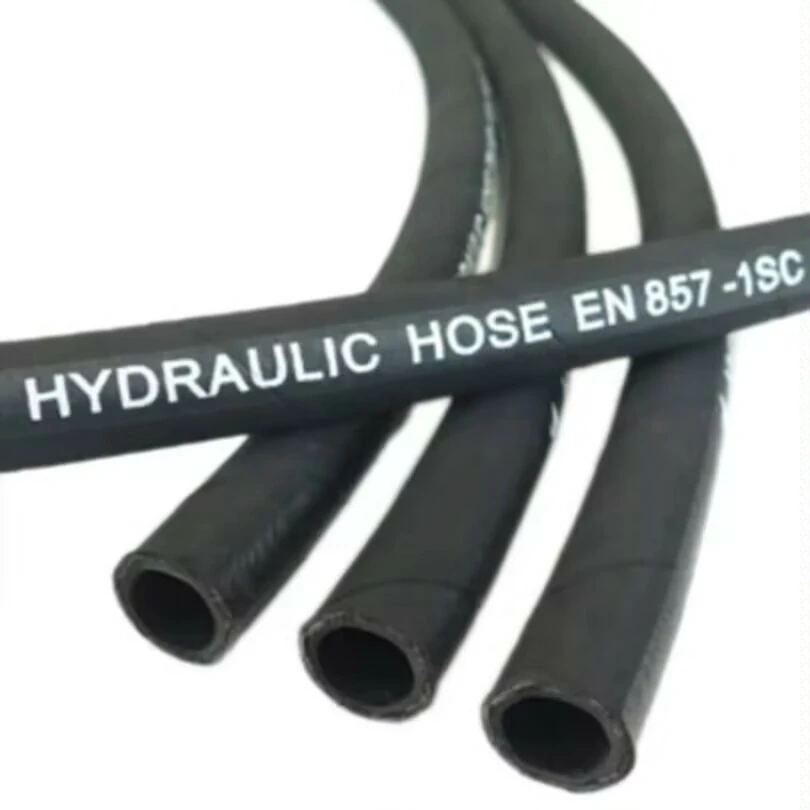8 月 . 16, 2024 10:21 Back to list
Comprehensive Solutions for Industrial Hydraulic Hose Supply and Customization Services
The Importance of Hydraulic Hose Supply in Industrial Applications
Hydraulic hoses play a crucial role in various industries by facilitating the transfer of fluids under high pressure. These hoses are designed to withstand extreme environmental conditions and deliver consistent performance, making them essential components in hydraulic systems. As industries continue to evolve, the demand for reliable hydraulic hose supply has become increasingly significant.
Understanding Hydraulic Hoses
Hydraulic hoses are typically constructed from a combination of synthetic rubber, thermoplastics, and steel wire, which together provide strength, flexibility, and durability. They serve as conduits for hydraulic fluids that power machinery and equipment in sectors such as construction, agriculture, manufacturing, and automotive. The ability of these hoses to handle high pressures—often exceeding 5,000 psi—renders them indispensable in applications where mechanical energy needs to be transferred efficiently.
Key Features of Hydraulic Hoses
When considering hydraulic hose supply, several critical features should be evaluated. These include pressure ratings, temperature tolerance, and chemical compatibility. High-quality hydraulic hoses are manufactured to meet specific industry standards, ensuring safety and reliability. Additionally, the flexibility of hoses allows them to be routed in tight spaces, making installation and maintenance more manageable.
The Role of Hydraulic Hose Suppliers
Hydraulic hose suppliers are vital in ensuring that industries have access to the right materials for their operations. They provide not only hoses but also fittings, adapters, and connectors that are essential for a complete hydraulic system. A reputable supplier should offer a wide variety of products that conform to established specifications, and they must also be prepared to supply custom solutions for unique applications.
Effective communication with suppliers is necessary to determine the best type of hose for specific applications. Suppliers often offer expert advice on the right materials, dimensions, and configurations to optimize system performance. Moreover, they play an educational role by informing clients about maintenance best practices, which can prolong the lifespan of hydraulic hoses and enhance system efficiency.
hydraulic hose supply

Challenges in Hydraulic Hose Supply
Despite the critical nature of hydraulic hoses, suppliers may face challenges in meeting demand. Factors such as fluctuating raw material prices, supply chain disruptions, and regulatory changes can impact availability. Additionally, the growing focus on sustainability has led to increased pressure on suppliers to provide eco-friendly options without compromising on performance.
To combat these challenges, suppliers must adopt agile business practices, enabling them to respond quickly to market changes. Investing in inventory management systems and developing strong relationships with manufacturers can also mitigate risks associated with shortages and delays.
The Future of Hydraulic Hose Supply
As technology advances, the future of hydraulic hose supply looks promising. Innovations such as smart hoses, which can monitor pressure and flow rates in real-time, are emerging to enhance system efficiency and safety. These advances will likely transform how industries approach hydraulic systems and maintenance.
Furthermore, the ongoing trend toward automation and digitalization in various sectors will necessitate more reliable, efficient hydraulic systems, thereby increasing the demand for quality hydraulic hose supply. Suppliers who can adapt to these trends and provide high-performance, durable hoses will remain competitive in the marketplace.
Conclusion
In summary, the hydraulic hose supply industry is a fundamental aspect of modern industrial operations. With the right hoses, fittings, and expert guidance, businesses can ensure that their hydraulic systems function optimally. By understanding the challenges and embracing innovations, suppliers can play an essential role in supporting the hydraulic needs of various sectors, ultimately contributing to improved productivity and safety in industrial applications.
-
EN857 2SC Hydraulic Hose Suppliers OEM & China Manufacturers
NewsMay.30,2025
-
51mm Hydraulic Hose Manufacturer China OEM Durable & Custom Solutions
NewsMay.30,2025
-
OEM Rubber Air Hose Supplier Durable Custom Solutions
NewsMay.29,2025
-
High-Pressure Wrapped Cover Steel Wire Spiral Hydraulic Hose Supplier
NewsMay.29,2025
-
Rubber water suction and discharge hose
NewsMar.07,2025
-
SAE 100 R6/EN 854 R6 Fibre Braided Oil Hose
NewsMar.07,2025



